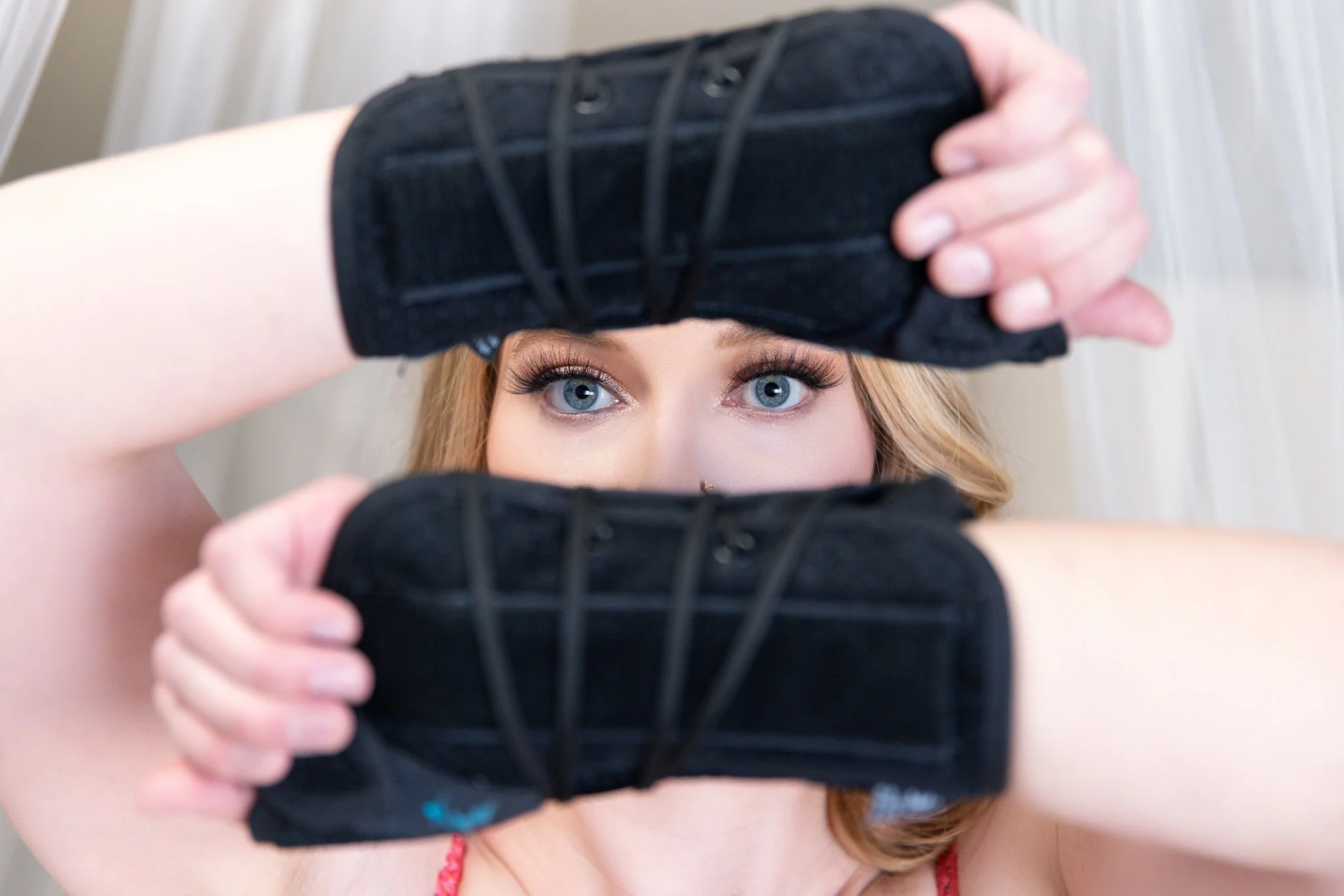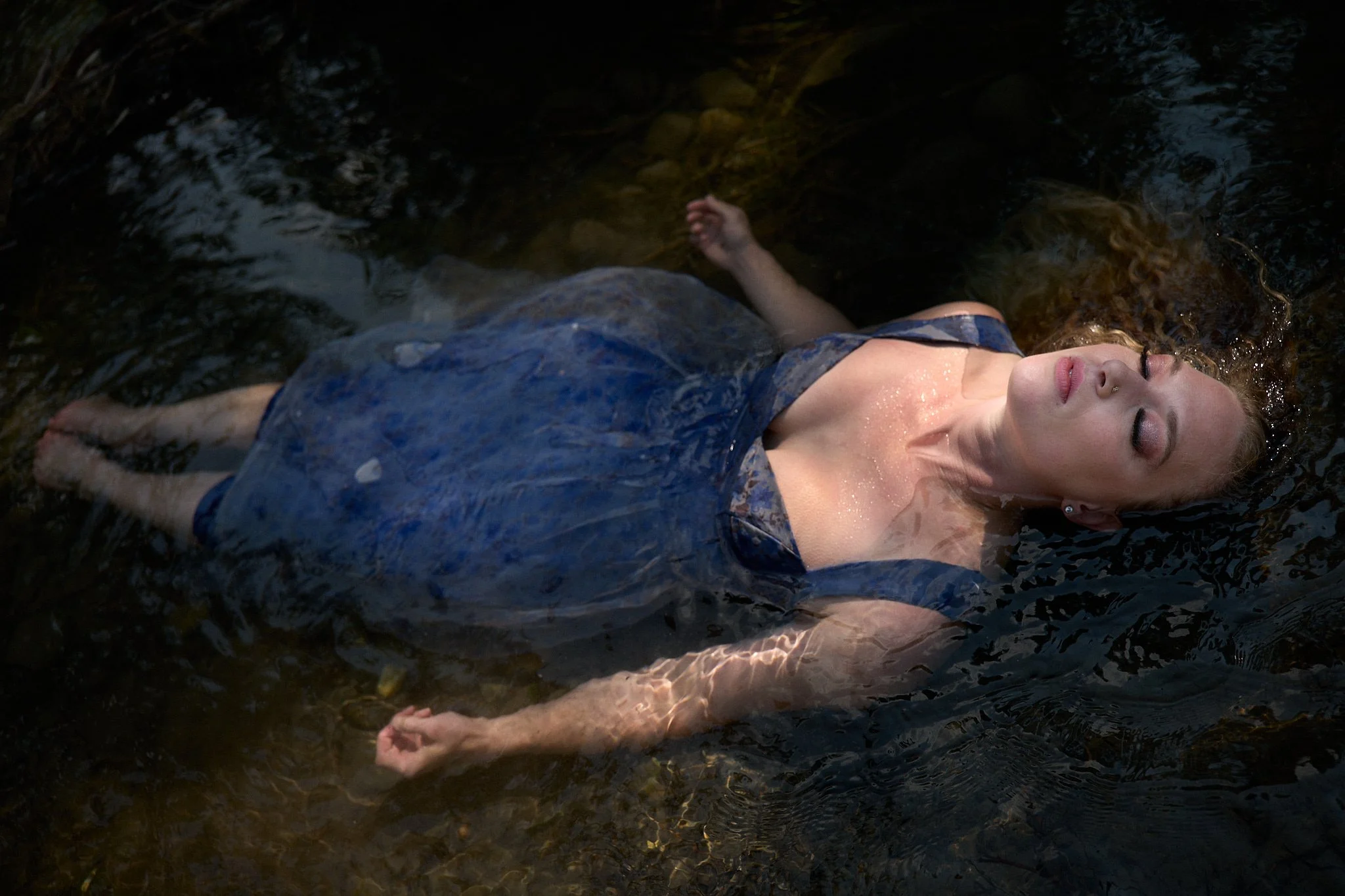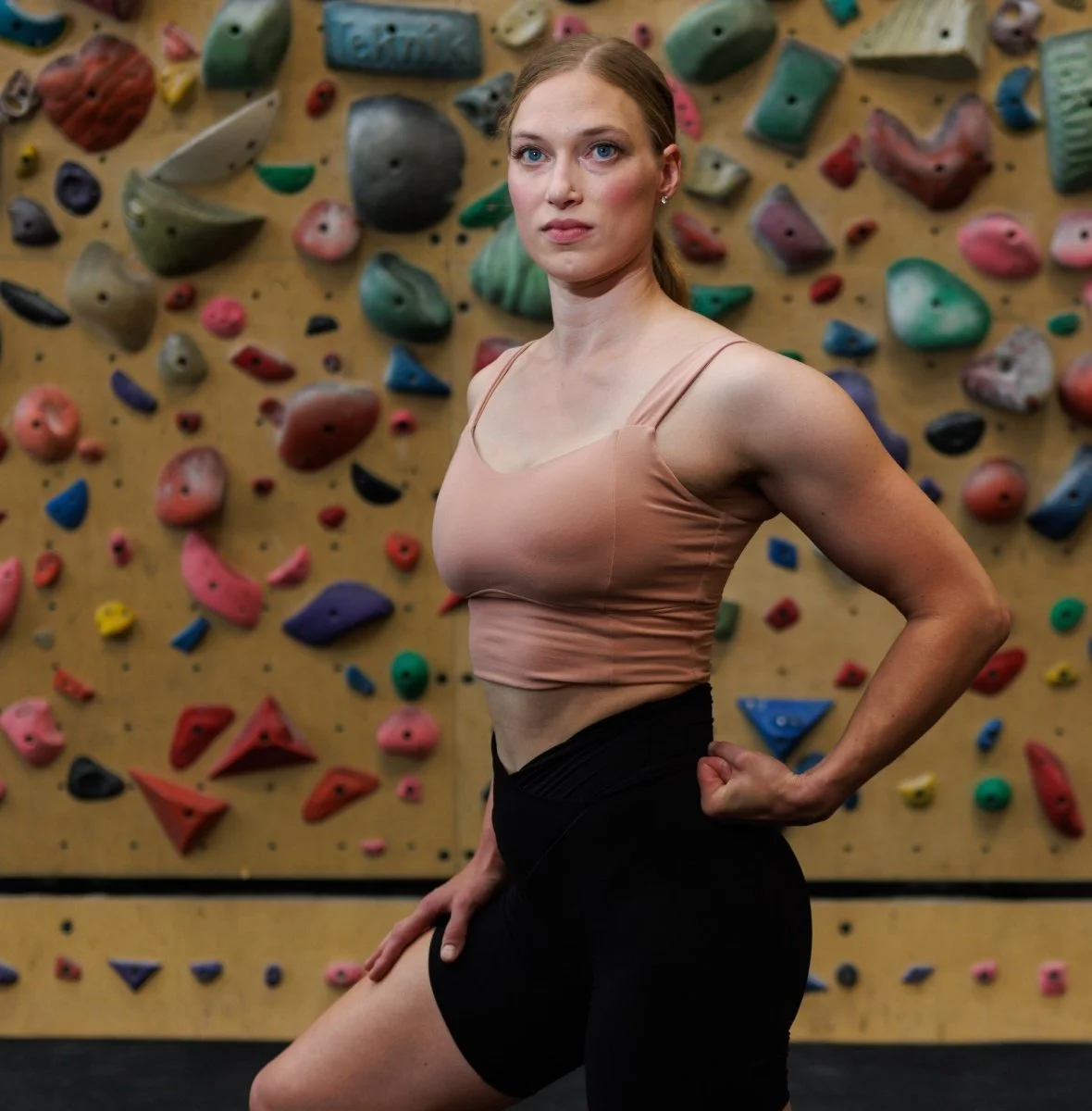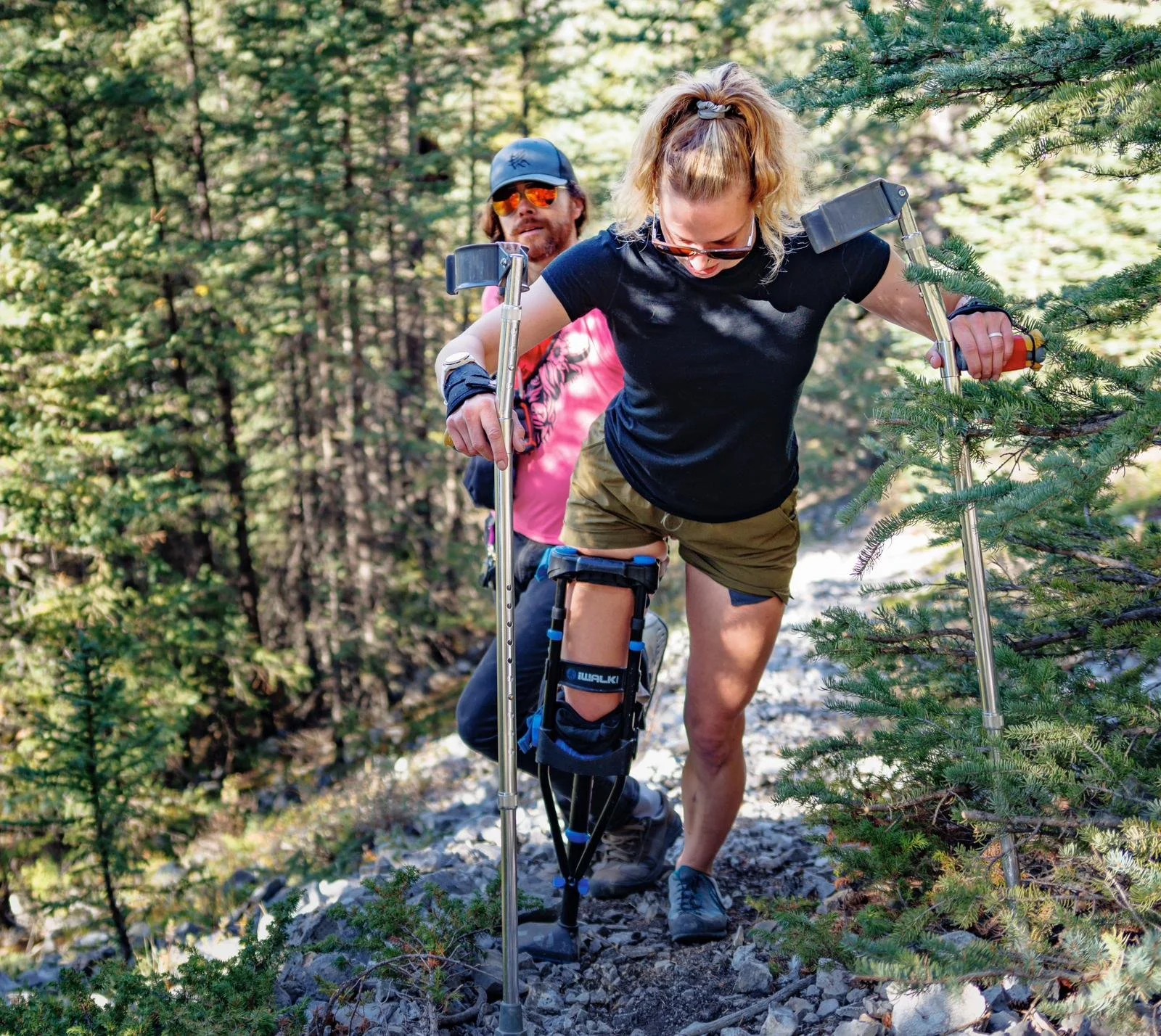
Advocacy & Awareness
CHRONIC PAIN | DISABILITY | INCLUSION | SPORT |
CHRONIC PAIN | DISABILITY | INCLUSION | SPORT |

“Some medical students reveal their disability experiences for collective benefit and to counter stigma. These strategic acts, political disclosures, resist ableist conceptions of disability in medicine.” -Jain, 2018, p. 1
My Story
I was diagnosed with hypermobile Ehlers-Danlos syndrome (hEDS) in 2021, 15 years after symptom onset. My pain started when I was 13, initially forcing me to quit soccer. The musculoskeletal issues became widespread and accumulated, as did the activities I was forced to give up.
EDS has taken a lot of things from me over the years: friendships, playing music, running, big adventure days, anything repetitive, anything dexterous, and much of the time, climbing. I find new activities to replace the ones I lost, only to have to give them up, too. I’ve had five major surgeries since 2018 with 17 rounds of prolotherapy and counting, but I remain #zebrastrong.
My medical journey consisted of many misdiagnoses and an overall lack of answers to explain issues that seemed too coincidental not to be connected. I took up climbing after I could no longer play music, leading to me realize that representation is important and everybody deserves the benefits of outdoor adventure and sport.
I hope that in sharing my disability others will be able to advocate for and receive the care they need. Furthermore, I hope for all abilities to see that adventure is possible, no matter how small. You can follow me adventuring outdoors and behind-the-scenes with hEDS on Instagram through @zebra.in.boots.
“It’s important to me to be open about my life with Ehlers-Danlos syndrome (EDS), because if I’m not, how will awareness and understanding around it improve?”
“If you don’t think representation matters, you’re probably well-represented. ”
What is Ehlers-Danlos Syndrome?
The Ehlers-Danlos syndromes (EDS) are heritable connective tissue disorders, all of which result in joint hypermobility, skin hyperextensibility, and fragile tissue. In EDS, the genes that manufacture and/or process collagen are affected, resulting in connective tissue that doesn’t function properly. Taking collagen supplements won’t help, and here’s why: https://www.ehlers-danlos.com/myths-and-facts-about-eds-and-hsd/.
The most abundant protein in the body, collagen is everywhere to support and provide structure to organs and other tissues like bone, ligaments, tendons, skin, and blood vessels. My joints are not supported properly by my ligaments. As a result, I have widespread arthritis and frequently experience subluxations, muscle and ligament tears, and other soft tissue injuries. Furthermore, because my collagen is defective, I tend to heal more slowly, improperly, or in some cases, not at all.
There are 13 known subtypes of EDS. I have the most common type, hypermobile Ehlers-Danlos syndrome (hEDS), which affects approximately 1 in 3,100 - 5000 and accounts for 90% of all EDS cases. This is also the only type of EDS in which the genetic cause and affected protein have not been identified. I experience joint hypermobility, joint instability, dislocations, scoliosis, other joint deformities, skin hyperextensibility, abnormal scarring, autonomic dysfunction, and potential for other structural weakness such as organ prolapse and hernias.
While hEDS is considered a rare disorder, the true prevalence is not known. This is mainly due to missed diagnosis and lack of recognition. There is no cure, so treatment is symptom management, often relying on physiotherapy and physiatry. My muscles have to be significantly stronger than the average person to compensate for compromised tendons and ligaments that would normally help to stabilize and secure my joints in place. Constant fatigue and pain are common. The good news is that the degeneration can be reduced through staying fit, but I have to be very careful in how I go about it since people with EDS are extra prone to injury. At the same time, deconditioning also causes more pain.
Sources:
Hakim, A. (2024). Hypermobile Ehlers-Danlos Syndrome. In M. P. Adam, J. Feldman, G. M. Mirzaa, R. A. Pagon, S. E. Wallace, L. J. Bean, K. W. Gripp, & A. Amemiya (Eds.), GeneReviews®. University of Washington, Seattle. http://www.ncbi.nlm.nih.gov/books/NBK1279/
The Ehlers-Danlos Society. (n.d.). What is EDS? Retrieved July 22, 2024, from https://www.ehlers-danlos.com/what-is-eds/
Collaboration with Heather Chapin Photography
For more, visit https://heatherchapin.photography/jenisefinlay
Other Volunteer Involvement
Calgary Women & Trans Climbing
Administrator & Co-Founder
Chronic Pain Support & Connections
Consultant
Alberta Charity Collaborations
Model
Ehlers-Danlos Syndrome Support Groups
Patient Navigator and Advocate
Modeling
After reconstructive foot surgery in 2023 when I was unable to participate in my usual activities, I wanted to challenge my mind outside of academia in a way that connects me to my body, while helping new photographers build their portfolio. I’ve continued modeling with the goals of increasing awareness around Ehlers-Danlos syndrome, showcasing a body type underrepresented in mainstream media, and challenging misconceptions about disability, sensuality, and femininity.



























